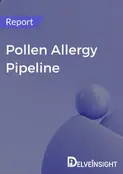If you’ve ever stepped outside on a breezy spring morning and started sneezing uncontrollably, you’ve had a close encounter with pollen allergy—also known as hay fever. Millions of people deal with it every year, and while the symptoms might seem simple (sneezing, runny nose, itchy eyes), what’s happening inside the body is anything but. Scientists often describe this process as the Pollen Allergy Pipeline—a chain reaction that starts in the environment and ends in your immune system.
How pollen gets to us
The story begins with plants. Trees, grasses, and weeds release tiny pollen grains to reproduce. These grains are so small they can float for miles. Weather plays a big role in how pollen spreads. A dry, windy day means more pollen in the air, while a good rain shower can temporarily wash it away. Once airborne, pollen is almost impossible to avoid.
First contact with the body
The nose and airways are the main entry points. For most people, pollen drifts in and out without much trouble. But if you’re allergic, your immune system overreacts. It treats harmless pollen proteins as dangerous intruders. Special cells grab pieces of pollen, show them to other immune cells, and start building antibodies. These antibodies attach themselves to mast cells in your body, setting the stage for an intense reaction the next time pollen shows up.
When you’re exposed again, those mast cells release histamine and other chemicals. The result? Sneezing, watery eyes, congestion, and that maddening itch in your throat or skin.
How people fight back
There are a lot of ways to tackle allergies, from lifestyle changes to medicine. Some people try to reduce exposure—wearing sunglasses outdoors, keeping windows shut during pollen season, or using HEPA filters at home. Cities can also help by planting fewer high-pollen species and creating green barriers that catch pollen before it spreads too far.
On the medical side, treatments range from simple antihistamines to nasal sprays that reduce inflammation. For longer-lasting relief, immunotherapy works by slowly teaching the immune system to tolerate pollen. Researchers are also looking at Pollen Allergy Emerging Drugs that act on very specific immune signals, with the goal of fewer side effects and stronger results.
New frontiers
Science is moving fast. Today, we can track pollen levels in real time using sensors, satellites, and even apps on your phone. Biotech researchers are trying to breed plants that produce less allergenic pollen. At the same time, biologic medicines—special proteins that block immune overreactions—are being studied in Pollen Allergy Clinical Trials worldwide. Many of these projects are driven by leading Pollen Allergy Companies investing in next-generation therapies.
Beyond medicine
It’s not just about drugs and devices. Public policy, education, and community planning also make a difference. Schools and offices can reduce indoor pollen exposure by maintaining filtration systems. Cities can monitor pollen more carefully and share warnings with residents. Even small steps, like encouraging allergy-aware gardening, add up.
Putting it all together
Think of the allergy cycle as a feedback loop. Each season gives scientists and policymakers new data: which pollens are worst, where outbreaks are most severe, which treatments work best. That information feeds back into new guidelines, research priorities, and healthcare strategies. Over time, the system improves.
For those who suffer, that means hope. With smarter planning, innovative treatments, and ongoing research into Pollen Allergy Treatment, the future of managing hay fever looks brighter than ever.
Latest Reports Offered by Delveinsight:
Novel Drug Delivery Devices Market | Osteoarthritis Market | Physiotherapy Equipment Market | Retinopathy Of Prematurity Market | Urolithiasis Market | Vaginal Rejuvenation Systems Market | Valley Fever Market | Acute On Liver Failure Market | Adrenal Cortex Neoplasms Market | Advanced Cancer Pain Management Market | Aids Related Kaposi’s Sarcoma Market | Angioedema Market | Autosomal Recessive Congenital Ichthyosis Market Size | B-cell Non-hodgkin Lymphoma Market | Balloon Valvuloplasty Device Market | Blood Glucose Monitoring Systems Market | Bone And Joint Infection Market | Cannabis Use Disorder Market | Capnography Devices Market | Carcinoid Syndrome Market
About DelveInsight
DelveInsight is a trusted provider of life sciences and pharmaceutical market research and consulting, offering actionable insights that empower organizations to make informed decisions. With a commitment to delivering strategic intelligence, DelveInsight serves as a key partner to global pharmaceutical, biotechnology, and healthcare companies looking to excel in an evolving market landscape.
Contact Us
Kanishk
Email: kkumar@delveinsight.com

